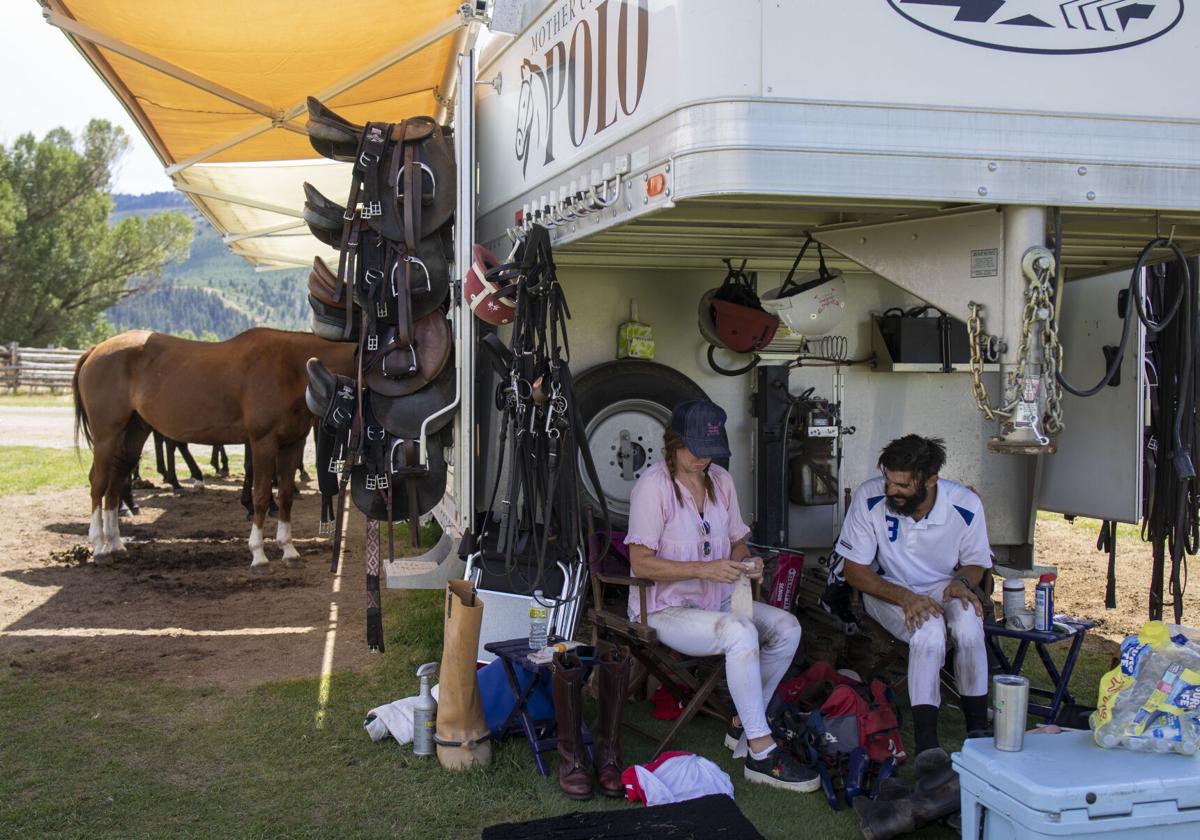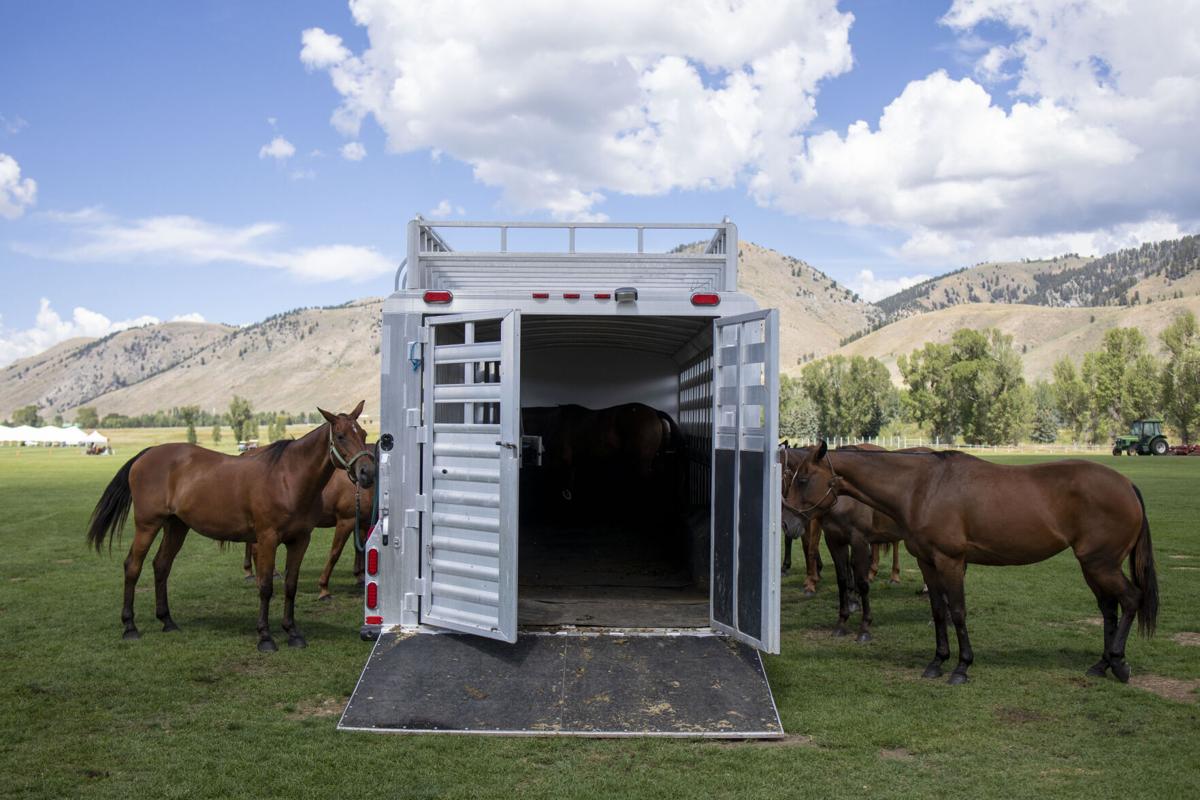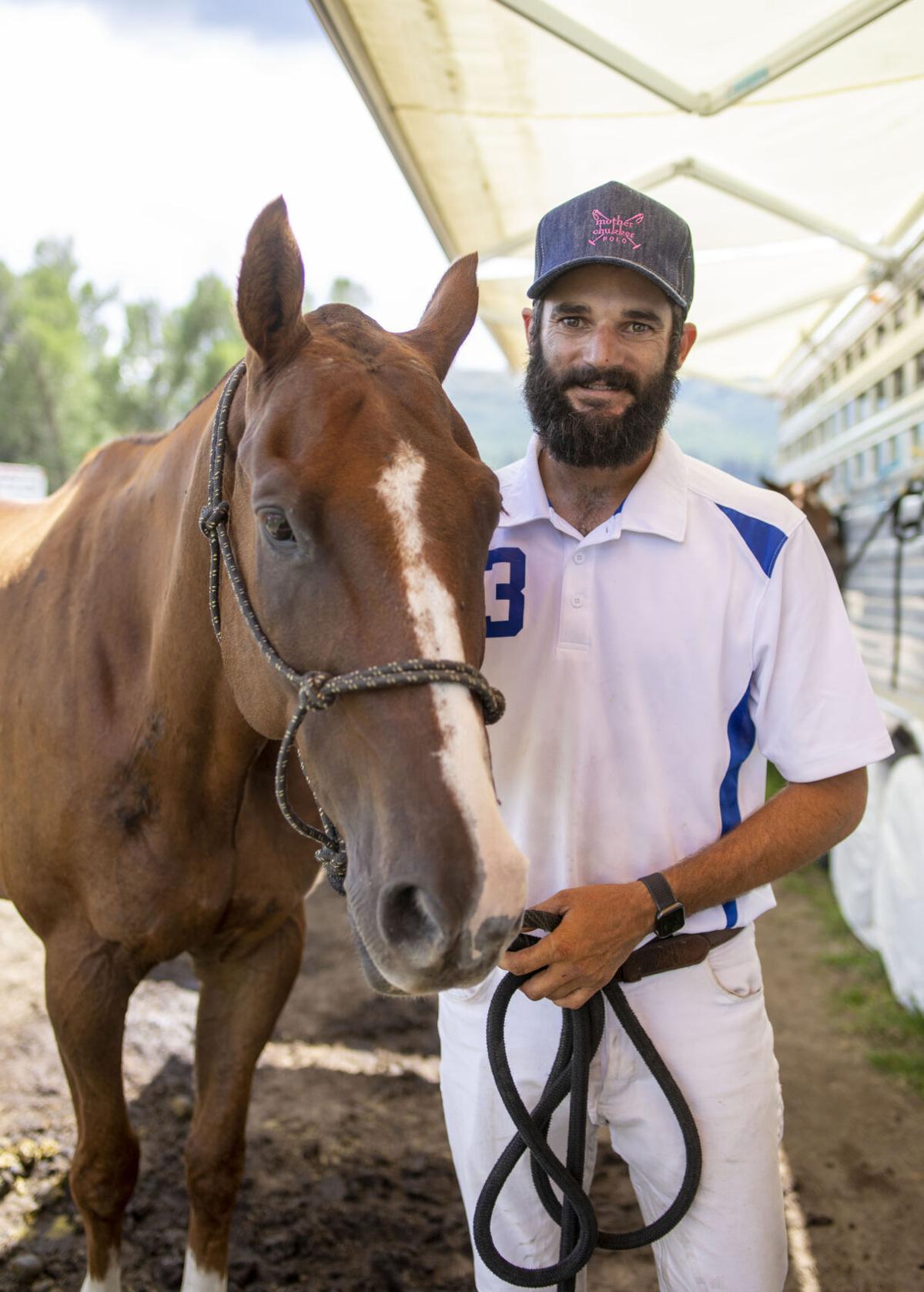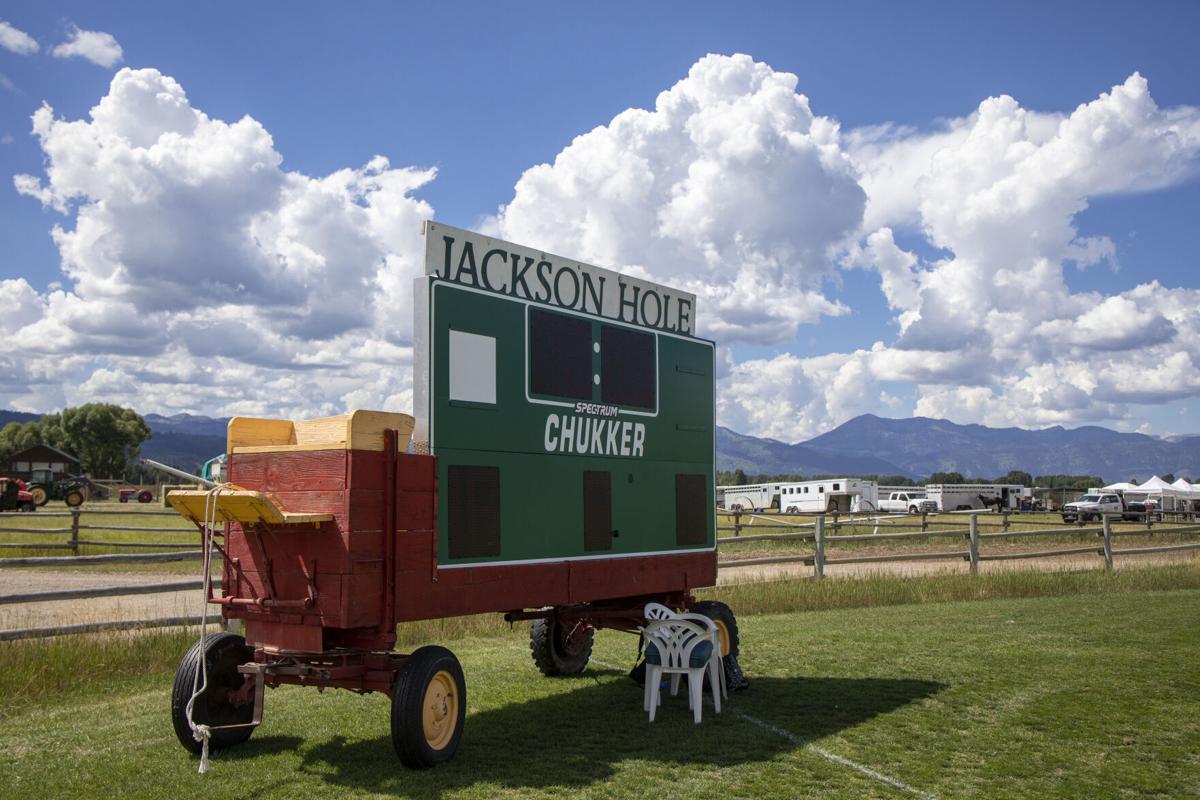Down past Rafter J Ranch, past South Park, a flat green oasis of bouncy grass awaits, though perhaps more notably so do 250 of some of the world’s finest thoroughbred mix horses.
The Jackson Hole Polo Club was started in 1959 by Paul T. von Gontard, who turns 90 on Thursday. Von Gontard has been a rancher in town for the past 70 years, which propelled him into the world of polo. He spent a lifetime on the pitch and didn’t retire from tournaments until he was 83.
Summertime is polo time at the club, packed with weekly tournaments running from July 8 until Aug. 21. On Friday afternoon, Polo Club board members lounged on plastic lawn chairs under a modest, E-Z Up tent, observing the game that followed their own as part of the Teton Cup.
“We’re in a new zenith moment,” polo club board member Tim Kelly said, his white riding pants dusty from the previous game. “Every league is completely full, and there’s even a waitlist.”
Polo is one of those unique sports in which skill level is not determined by age or sex. The club prides itself on its wildly diverse roster: Roughly 50% of players are female, many of whom are moms; the youngest jockey in the league is 12, the oldest is 74; and players hail from a number of nations outside of the U.S., including Australia, Chile, South Africa, Argentina and Mexico.
“Good polo is good polo whether you’re playing against women or men,” said board member Esther Kane, 65. “Every player is rated to their usefulness, and everyone here is competent.”
Gary Roubin, 74, is the oldest player at the club and the only player who is also a resident. While he has spent most of his life riding ranch horses in native Australia, Roubin started playing polo in his 40s.
“Polo keeps you young,” Roubin said. “You have to be very fit to be able to go out there — it’s not golf.”
He has observed the club grow increasingly family-oriented over time and adores the regenerative and generational nature of polo.
Marcos Villanueva has been playing at the club for 23 years and met his wife, Mandi Villanueva, along the way. The couple had a daughter 12 years ago, Uma Villanueva, who is now a jockey herself at the club, playing in tournaments against folks five times her age.
There is a method to the generational aspect of polo, though.
“You’ve got to do a lot of something else to do a little bit of polo,” Kelly said.
Jockeys tend to start riding and learning to play when they’re growing up, but, because the sport can get expensive, many young adult jockeys take a break to go to school and save up. Lots of people who grew up playing polo return to the sport when they’re financially stable, which can take decades.
Martín Zegers, 46, is a fourth-generation jockey. Originally from Ocoa, Chile, Zegers has been riding since he was 8 and started playing polo when he was 16. His great-grandfather was one of the first jockeys in Chile, which is now one of the international hot spots for competitive polo.
“In Chile teams usually play for a brand, so it’s more competitive,” Zegers said as he cooled down after a game. “I like the community and the place here. It’s fun to play polo that you’re not killing yourself over.”
Zegers has played professionally for decades, which has meant a number of injuries, the worst being while playing in tournaments in Florida in 2007 and 2011. He awoke in a medical helicopter both times, having sustained concussions.
“I got in a crash, and I ended up falling and hitting my head,” Zegers recalled. “Sometimes horses trip or hit other players. It’s not like paragliding where you can control a lot of the factors.”
Zegers is not the only Latin American to play polo, as the sport is incredibly popular across Central and South America and believed to be more accessible there. One reason is because nutrient-rich alfalfa, on which elite, polo horses graze, grows naturally in more tropical climates.
Another reason is because the culture of horseback riding in the U.S. is considered more formal, in that children start riding at older ages than those in Latin America.
“In Latin America, kids who just learn to walk are put on horseback,” Kelly said, adding that if they fall off a horse at a barbecue then everyone just laughs. “Here, the Consumer Product Safety Commission would be chasing after you.”
The Jackson Hole Polo Club breeds many of its 250 horses on site, which involves years of strategic training that starts in the stalls. To “imprint” newborns with polo, balls are thrown by the horses soon after birth. Once they grow to three years old, training starts for one hour a day, six days a week, and they’re ready to play from roughly 5 to 20 years old.
“Horses get a bad end if they are no longer of use, so we like to rescue track horses as well,” Kelly said. “There’s no more horse slaughter in the U.S., but they’re still sent to Canada or Mexico where horrible, horrible stuff can happen to them.”
Horses are able to race for only around seven years at most, which means retired racehorses are no longer of use in the same way. Many organizations exist to rescue racehorses and reinvent them as polo ponies, though the process can take around two years because they’ve been taught to run and nothing else.
“All of our horses here are like liquid gold,” Kelly said, adding that the hay grown at Melody Ranch is some of the best grass around. “It’s almost a nirvana for horses in the summer; they get jacked up on grass because it’s so good.”
Just as the horses give to their riders, their riders feel responsible to look out for their horses.
Kelly has 10 retired horses on his Texas farm, and he intends to ensure they live great lives since “they become my family.”




